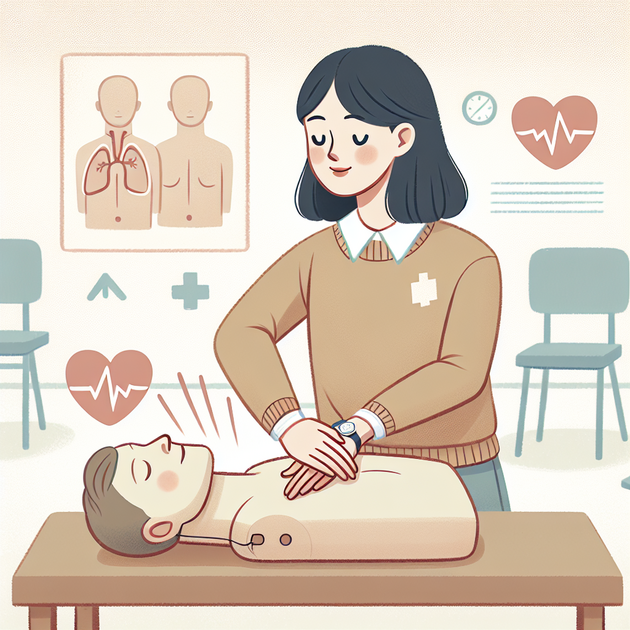How CPR Works: The Life-Saving Science Behind Chest Compressions
What if you could double or even triple someone’s chances of survival in a medical emergency—just by knowing what to do? That’s exactly what happens when you understand how CPR works. Cardiopulmonary resuscitation (CPR) isn’t just something from movies; it’s a practical skill that can truly make the difference between life and death.
Why Is Knowing How CPR Works So Important?
Every year, hundreds of thousands of people experience sudden cardiac arrest outside hospitals. When the heart suddenly stops beating effectively, blood flow to the brain and other vital organs comes to a halt. Without quick help—often within minutes—the results can be fatal.
CPR steps in as a bridge until professional medical care arrives. By keeping blood moving through chest compressions (and sometimes rescue breaths), you’re literally giving someone more time and a better chance at recovery.
The Basic Steps of Performing CPR
Understanding how CPR works doesn’t require years of medical school. Here’s an overview anyone can follow:
- Check for responsiveness—gently shake or tap the person and shout.
- If there’s no response and they’re not breathing (or only gasping), call emergency services immediately or ask someone nearby to do it.
- Place your hands—one on top of the other—in the center of their chest.
- Push hard and fast—at least 2 inches deep at a pace of 100-120 compressions per minute (think “Stayin’ Alive” by the Bee Gees for rhythm).
- If trained and comfortable, give rescue breaths after every 30 compressions (tilt head back slightly, pinch nose shut, breathe into mouth).
- Continue until help arrives or the person starts breathing on their own.
Even just doing chest compressions without rescue breaths is far better than doing nothing at all.
The Science Behind How CPR Works
When someone’s heart stops pumping effectively during cardiac arrest, oxygen-rich blood isn’t circulating. Brain cells start dying in minutes without oxygen. Chest compressions take over for the heart by manually moving blood through the body.
Rescue breaths are important because they add oxygen into the lungs if someone has stopped breathing entirely. Together, these two actions keep essential organs alive until professionals can try to restart the heart with advanced tools like defibrillators.
A key point about how CPR works is that time is everything—the sooner you start after collapse, the greater their chances.
A Real-World Story About Performing CPR
A few years ago at a local gym in Ohio, a man in his forties suddenly collapsed during his workout. People nearby froze for a second—but then one woman who’d recently completed a basic first aid course sprang into action. She started chest compressions right away while another person called for help.
By keeping up steady compressions until paramedics arrived with an automated external defibrillator (AED), she helped save his life. Doctors later said those quick actions doubled his chances of survival and prevented brain damage.
It’s stories like these that show just how powerful knowing how CPR works can be—no cape required!
Why Everyone Should Know How CPR Works
Learning how to do effective chest compressions isn’t just for healthcare workers or lifeguards—it could be any one of us who needs to help someday at home or out in public. Classes are widely available through organizations like the American Heart Association or Red Cross.
Even if you don’t remember every detail under stress, starting something is always better than standing by helplessly. And with more people understanding what happens during those crucial minutes after cardiac arrest, communities everywhere become safer places.
So next time you hear about someone saving a life with basic first aid skills like this—would you feel ready to step up? Maybe now’s a good time to find out more about local classes near you!

Leave a Reply